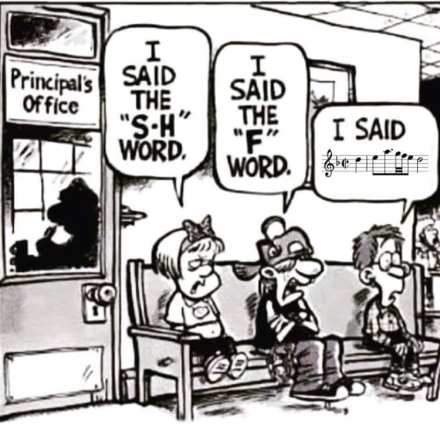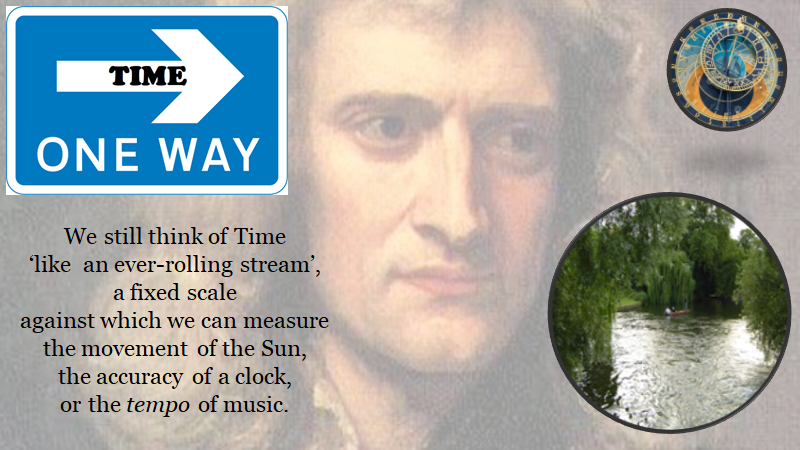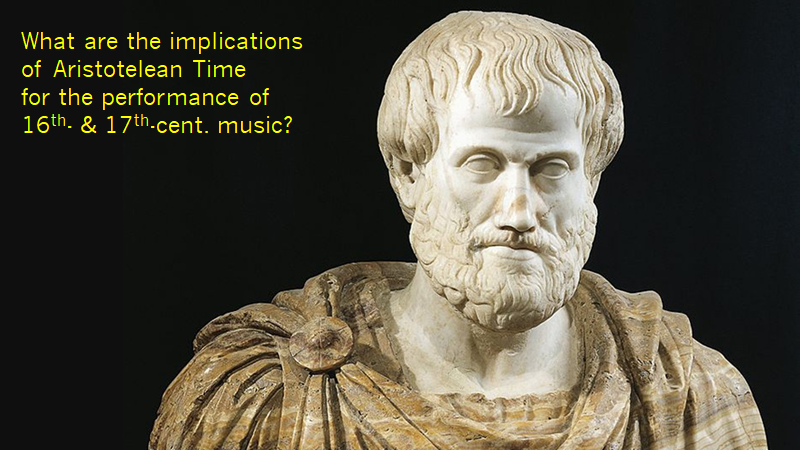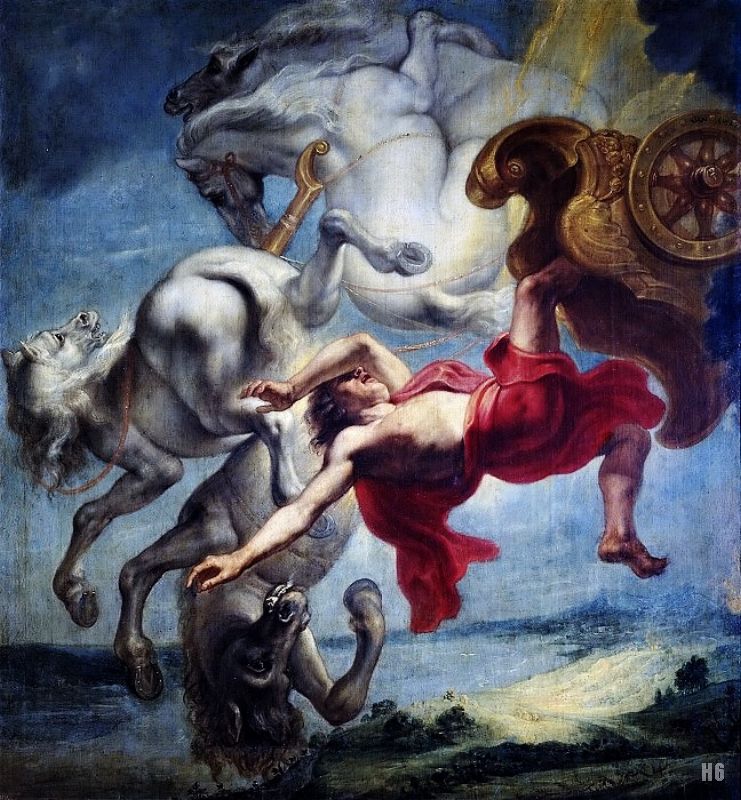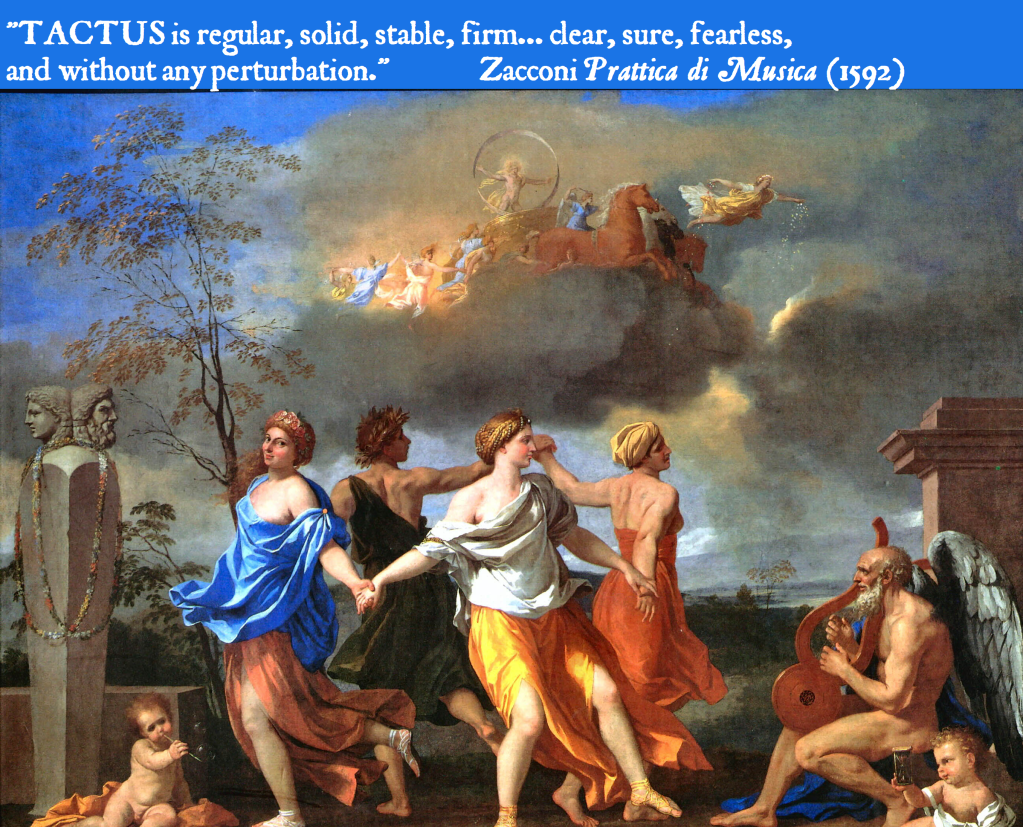There are significant differences in music-making, not only between mainstream and Early Music approaches, but also between today’s Early Music and what musicians of former centuries actually did back then.
Most of us recognise that Historically Informed performers should renounce any claims to ‘authenticity’: we will never know everything about earlier styles of performance, and there are some historical practices (e.g. producing castrati to sing soprano) that we would not wish to repeat, historical attitudes to race, gender or religion that have no place in modern-day society. But whilst researchers continue to unearth and decipher ancient sources of new information, there is already a considerable gap between what we know about Historical Performance Practice and what we do in the standard practices of Early Music today.
In the context of modern-day performances of 19th-century repertoire, Clive Brown referred to ‘the yawning chasm between contemporary practice and historical evidence’. His critique was aimed not at mainstream musicians, but at the current Early Music approach, and it could apply equally well to many performances of renaissance and baroque repertoires.
In my very first post back in 2013, I compared the hot topics of modern-day Early Music debates – vibrato, pitch, temperaments – with (more inspiring) historical priorities proclaimed by Caccini:
Music is Text and Rhythm, with Sound last of all. And not the other way around!
Caccini ‘Le nuove musiche’ (1601)

‘The historical priorities are Text, Rhythm, Action – and the audience’s emotions. Text (not vibrato), Rhythm (not rubato), Action for the Audience (not how the performers themselves feel).’ Read more here…
In this article, I make two (interlinked) case-studies of modern-day practices that are so familiar as to be almost beyond question, but that we all know to be un-historical. Beyond calling out ‘Mind the gap’, my purpose is to consider how the musical skills we have acquired to handle an anachronistic approach might be adapted to facilitate performances that better apply the historical information we already have.
The only essential pre-requisite is having the courage to try something different from what is experienced in nearly all modern-day performances, from what is heard in nearly every recording. Read on, if you dare!
Vocal Scores
For renaissance polyphony and baroque opera, singers nowadays use scores, as opposed to the individual parts used for nearly all repertoire pre-1800.
Our best consort singers have acquired high levels of skill in score-reading. This skill facilitates ensemble unity, entry making, pitch finding etc, and underpins two commonplace directorial interventions: at phrase ends, unifying the duration of final notes and/or pronunciation of final consonants; adjusting the ensemble balance from phrase to phrase by having individual singers switch from one part to another.
I was privileged to observe one of the UK’s most experienced Early Music singers, tenor John Potter, coaching vocal ensembles in the subtle interactions of one-voice-to-a-part consort singing. He encouraged singers to scan the score, and “wait for your colleague to sing his bit, before you move on to sing your bit”. Even when there is a conductor, today’s elite vocal ensembles acheive their high-precision unity of timing by such ‘give and take’ between individual singers, combining attentive listening with skilled score-reading.
That is all very well, but none of it is historical. Not only did Monteverdi’s singers not have scores, but Zacconi (1596) describes clearly that “vertical alignment”, the unanimity of timing seen in modern scores and demanded by record producers, was not desired circa 1600. Rather, each individual singer was allowed the liberty of arriving late on an expressive note, whilst the underlying Tactus continued steadily: like Ella Fitzgerald syncopating around a steady beat. Read more about ‘Making Time for Beautiful Singing’ here.
And when we stop to think about it, it is unlikely that musicians of the period would have prioritised ‘consistent vocal balance’ (is that even desirable?) over the traceable self-consistency of individual polyphonic strands within the strict rules of renaissance counterpoint. Rather than switching parts to boost a quieter voice, perhaps the other singers listened harder, or sang more softly themselves.
Singing from individual parts creates a different set of listening skills within the ensemble, and imposes new demands for rhythmic clarity: your colleagues don’t know what you are supposed to sing, so you have to communicate the underlying Tactus, whatever the superficial notes might be. And once you add the period practice of spontaneous Divisions (melodic ornamentation in shorter note-values), then even the partial scores that the continuo might have (for example for the Monteverdi (1610) Vespers) will not show visually what is actually happening aurally.

In fact, the continuo scores for some solo moments in the Vespers are significantly different from the vocal part-books, even before the singers add spontaneous Divisions and Zacconi-style delays. If the continuo attempt to “follow”, placing their bass-notes as seen vertically underneath the appropriate solo-notes as heard, a train-wreck inevitably ensues [ok, there were no trains in 1610, but you know what I mean]!
Reading from scores, those with long notes end up ‘following’ the voice with the most activity, whereas historically, it was the voices with notes in Tactus-values (minims and semibreves) that determined the rhythm: fast-moving Divisions must fit in (read more about Passaggi).
Historically, soloists were guided by the accompaniment [see Peri (1600) here]. If this seems controversial (and it is controversial in mainstream choirs and most of today’s Early Music), compare it to jazz, where the rhythm section keeps the groove steady whilst soloists syncopate, “having fun and improvising counterpoint” [Agazzari sopra’l basso1607, more on Agazzari here]
Conductors
Conducting in Early Music is the elephant in the room, the emperor’s new clothes, the glaring anachronism that no-one dares name, the dinosaur waiting for an incoming comet of historical information.
Period treatises, eye-witness reports and iconographical evidence [see also Peter Holman’s recent book on the subject] show beyond all possible doubt that before c1800, ensemble music was not conducted in the modern sense, but was guided by Tactus (which is quite different, read more about Tactus here and in many articles within this blog).
That ‘yawning chasm’ between modern-day habits and historical practice is seen all too clearly in the current phenomenon of the ‘director from the keyboard’, who conducts modern-style whilst using a harpsichord or chamber organ as something between a fig-leaf and a very expensive music-stand.

Working with conductors, today’s Early Music performers have developed the skills to follow a varying beat and – when the going gets tough – to stay together by reference to the score. In particular, continuo-players have learnt to play without committing themselves to any clear rhythmic impulses, in order to follow soloists and/or accommodate themselves to a conductor’s interpretation of the beat. Deprived of their historical role of ‘guiding the whole ensemble’ (Agazzari 1607) and ‘directing the singers’ (Gagliano 1608), today’s continuo-players amuse themselves with divisions and embellishments, often simultaneously (but not quite together) amongst several performers, a horror condemned by Agazzari as ‘soup and confusion’ or a ‘flock of noisy sparrows’.
Historically, there was Tactus-beating for solo lute-songs, vocal consorts and polychoral ensembles, but no hand-waving at all for opera and dramatic music (in genere rappresentativo). The steady down-up of Tactus-beating imitates the stability of the cosmos and creates Time itself (according to Aristotelean philosophy, read more here). Just to read Zacconi’s list of Tactus qualities will assure any consort-musician that it differs fundamentally from modern conducting:
Tactus is regular, solid, stable, firm… clear, sure, fearless and without any perturbation
Zacconi ‘Prattica di Musica’ (1592/1596)
Transferrable skills
Of course, we can get Early Music onto the stage (or into the recording studio) fast, by using vocal scores and modern conducting. But if we want to apply Historical Information to our performance, there needs to be time for experimentation, acquiring new skills, and consolidating experience in unfamiliar modes of musicking. Indeed, this kind of re-imagining how to make music is what HIP is all about.
Nevertheless, it is especially challenging to deal with individual ensemble members’ fundamental habits of ensemble practice. How much easier just to conduct everything, just to continue with those social media debates about vibrato, pitch and temperament!
If tomorrow’s Early Music is to be Historically better Informed than today’s, we must invest time in experiment and training for subtly different musicianship skills. This cannot be done within a normal rehearsal: we need to create un-pressured time and a safe space for individual musicians to let go their normal habits and take the risk of trying something fundamentally different. But perhaps we can progress more quickly by re-purposing the (slightly off-target) skills we already have…
Today’s Early Musicians are highly skilled at following a visual beat (no matter how unreliable or unsteady!), at listening to each other with reference to a vocal score, and at using aural cues to follow wayward soloists.
Visual beat
Historically Informed Tactus-beating is both a visual cue and an embodied practice: musicians need to become familiar with both aspects. We can practise with the whole group simultaneously beating Tactus: relaxed arm hinged at the elbow, palm outwards, down for one second, up for one second. There is no leader, no followers, the group mission is to remain together.
We can play through some (not too demanding) ensemble music, with each member of the group taking their turn to beat Tactus, whilst the others play to the beat. The role of the Tactus-beater is not to “interpret the music”, but to give the steadiest, most equal beat they possibly can. A wise coach can use this exercise to re-balance relationships of “leaders” and “sheep” within the ensemble…
Working alone, a musician can synchronise their Tactus-beating, and (later) their playing/singing to a home-made pendulum. A 1-metre length of string will produce a 1 second beat (Mersenne, 1636). Notice that the movement of a pendulum, and the feeling this movement creates, is quite different from the sharp click of a metronome.

Just as jazz singers swing their arms and/or snap their fingers, not to conduct each other, but in order to inhabit, embody, to make physical the shape of Time itself, the groove of Music, so these simple exercises help us internalise the slow, steady beat of Tactus. Some musicians may need frequent reminders and extra practice, to think and move in a slow minim = 60 pulse, rather than sub-dividing into today’s more typical crotchet = 120.
See the Tactus Workshop Manual for more suggestions.
Listening without a score
We listen in a different way, when we do not have the visual reference of a score to guide us. When I teach a master-class, I always listen to the piece the first time without looking at the score. This places me in a similar position to an audience-member, who should understand the performance aurally, without a score, perhaps without any previous knowledge of the work.
For Early Music consorts, listening without a score invites us to maintain ensemble unity by understanding the underlying Tactus, since we cannot know the significance of individual notes (which might anyway have been ornamented or otherwise changed spontaneously). Playing/singing to colleagues who have no score challenges performers to show more clearly how those individual notes relate to the underlying Tactus, shaping long-notes across several Tactus beats, lightening-up fast-moving ornamentation so that it flows without disrupting the Tactus beat, articulating syncopations appropriately so that they are correctly understood.
An elementary, but surprisingly powerful exercise, is to ask the whole group to beat Tactus (without seeing a score) whilst one person plays/sings their individual part (this also works for solo pieces, e.g. a harpsichord or harp solo). Everyone becomes more aware of Tactus, more skilled at maintaining it in spite of aurally suggested changes (this is the Tactus-beaters’ role) and at avoiding unwanted changes (this is the performer’s task).
When this becomes too easy, then the performer can be invited to add divisions and impromptu variations, and/or to apply Zacconi’s expressive delay, the accento. Read more here.
Meanwhile, everyone is getting more (much needed) experience of the visual and embodied practice of Tactus. Period musicians would have been beating Tactus all their lives, from their first lessons to learning new material as full professionals even as elite soloists and ensemble directors. For Early Musicians today, Tactus cannot be learned by studying historical treatises, not even by reading my blog! You have to Do It Yourself.
Another way to add complexity is to combine two performers, whilst the majority of the group continue to beat steady Tactus. This builds the habit of trusting the embodied movement of Tactus, not following wayward aural cues. The crucial assumption is that the music continues in steady Tactus, rather than ‘follow anything that moves!’.
Alternating playing/listening exercises between different members of the group prepares for the next level.
Directing

Who directs, and how? Historically, and (it would be desirable) also for our modern-day Early Music, the role of coaching an ensemble and making artistic decisions (maestro di capella) should be distinguished from the role of administering the Tactus-beat (summinstrar il tatto). Coaching and making artistic decisions happens in rehearsal. In performance (including playing-through during rehearsals) the primary task of the Tactus-beater is to maintain a steady beat, and not to be swayed by any temporary aural deviations.
This does not mean an aggressive tug-of-war between leader and followers, but a mutual recognition of the cosmic, humanist and practical significance of the Tactus (i.e. the doctrine of the Music of the Spheres, in which the entire universe is turned in slow steady rhythm by the hand of God, the primum mobile).

If your pulse stops, the music also dies…
Nevertheless, there is freedom for an individual performer to depart momentarily from the Tactus, providing they rejoin it promptly. Zacconi expects accento-singers to be back on Tactus-track by the next beat.
Taking turns to beat Tactus, and with the director/coach observing, ensemble members can experiment with maintaining unity by visual cues from the Tactus-beater, by their own embodied experience of Tactus-beating, and by listening to aural cues that indicate the underlying Tactus (not the movement of individual notes).
Listen to the bass (in polyphony), to the continuo, to a simple or slow-moving part, to what appears to be ‘accompaniment’ rather than to ‘soloists’. Basses, continuo-players, performers of simple slow-moving parts and anyone who might be (temporarily) ‘accompaniment’ must learn to maintain Tactus reliably, to guide and direct the whole ensemble, and (a tough call) not to ‘follow’ the soloist, a fast-moving or complex part.
This ensemble skill of maintaining Tactus rather than following soloists takes a lot of practice. The aim is to go beyond any initial stiffness or sense of confrontation, and find a flowing, embodied sense of rhythm in the slow steady Tactus beat. The mantra is: “soloists are free to depart from the beat, but the beat will not change to accommodate them”. Be inspired by Ella Fitzgerald.
As the whole ensemble gets good at this, soloists can throw in deliberate ‘bending’ of the rhythm, around the steady beat. Indeed, soloists should only ever bend the rhythm deliberately, not by accident or mis-management. If a tricky moment cannot be performed accurately, then it needs more practice. It’s always worth learning a crucial turn of phrase precisely as notated, before adding any rhythmic alteration. (See Caccini for suggestions of rhythmic alteration to short notes, within the steady Tactus).
Solo players, who often have to present a complete polyphonic texture within a single instrument (harpsichord, lute, harp, even violin in J. S. Bach’s Partitas), need to learn first the basic skill of maintaining Tactus whilst they play a single line. The temptation is for the beat (maintained perhaps by the foot if your hands are busy) to follow the performance, but it should be the other way around! Use a pendulum if necessary, to control this.
The more advanced skill is to have Tactus in the bass, in the continuo, in the accompaniment, direct the solo line in Measure. This requires significant mental re-organisation and artistic re-prioritising. When you can do this well, then you can add Caccini-style or Zacconi-style rhythmic alterations to the solo line, whilst keeping the accompaniment steady.
Aural training
Students – and many experienced performers – like to learn from aural examples. But we have very few aural examples of Tactus in today’s Early Music that we can imitate. This well-documented historical practice is not yet reflected in most modern-day recordings or concert performances. Nevertheless, we can still benefit by learning from, and practising with, aural examples.
Make your own home recording of the accompaniment of your piece, check that it really is in Tactus (this is itself an educational exercise, which may need repeated attempts!), and then play the solo line along with your own Tactus-measured accompaniment.
If you are making a lock-down-style multi-track ensemble recording, record the bass first. Or even create a “Historical Click Track” (to be removed from the final mix), not with a click, but with an aural signal that is more akin to a pendulum swing. For example, just say ONE…. TWO with a sustained, slow-articulated ‘one’ and a crisper ‘two’ (the sounds of the English language work well for this). Or a drum track, DUM-bak.
Many modern-day performances use a slow, resonant large drum to create a steady groove, and the steady-calm-strong feeling of renaissance rhythm (think Pavan, for example). I would say that this feeling is historically appropriate, and certainly following an aural cue works well for today’s musicians. Nevertheless, period evidence shows that pavan percussion was a more active rhythm in shorter note-values on a small, less resonant, tabor-like drum. See Arbeau Orchesographie here. The slow-steady-calm-strong beat is the appropriate feeling for historical Tactus, but we need to create it for ourselves rather than relying on the wrong kind of drum!
But we could use that modern pavan-drum as a training aid for high-style polyphony, or seicento monody, to instill that sense of Measure, of reliable Tactus that is needed even when the beat is not dancing to the beat of shorter note-values. This distinction (Tactus in long note-values for serious music, happy dances with regularity extended even to short note-values) is what lies behind Peri’s remark about differing circumstances in which the soloist should not, or should ‘dance to the rhythm of the bass’. More about Peri’s Tactus bass here.
Pre-requisites
In order to begin this development, and move today’s Early Music one step closer to Historically Informed Performance, individual musicians need to hone their Tactus skills, their ability to control rhythm with a slow, steady count. And conductors need to learn the essential historical skill required for their role: a simple down-up beat maintained equally and reliably, without any pertubation (Zacconi, Il Corago c1630 etc).
In Monteverdi’s (1610) Vespers, we would not play continuo on a Steinway, we would not play baroque violin with a modern bow, we would not admit a cornettist who had not learnt the basic fingering-system of his instrument. Why should we accept conducting that eschews the fundamental period technique of the Tactus-hand, that is Historically Un-informed about the historical role of Tactus-beater?
A key pre-requisite for better Informed Performance is proper Historical training for Early Music ensemble directors: no more dinosaurs, no more modern-interpretative-dance in front of a keyboard instrument!
Time-beating lays down the tracks that the perfomance will follow. As Early Musicians, we can make Historically Informed decisions about how to lay down those tracks, and we can follow those tracks in newly-discovered and period-creative ways, offering our listeners a thrilling and surprising ride. Until then,
Mind the Gap!
You can watch a video of the train-chase scene that inspired the title of this post here I hope you’ll enjoy the sequence where Gromit the dog lays down new tracks to shape his own journey, despite fierce resistance from the villainous penguin, FakeHip McBaton (or whatever the baddie’s name really is).

























